With the demise of the Holden brand at the end of 2020, buyers are eager to get their hands on almost any Holden model. However, those cars with a V8 under the hood or a link with the company’s motorsport heritage will garner intense interest. That brings us to this 1990 Holden Commodore VN Group A SS. We’ve seen various models here at Barn Finds that were developed specifically for motorsport, but this Commodore marked the end of a significant era. Adding to its desirability, this particular vehicle is verified as the second Group A SS to roll out of the factory. Finding such an early example in the market today is virtually unheard of. The owner has decided to part with the SS, so he has listed it for sale here at Lloyds Auctioneers & Valuers. For those who doubt the desirability of these classics, the bidding tells the story. It has already rocketed to A$306,000, and there are still at least two days left on the listing.
For readers outside Australia, you will probably need a bit of background to understand where this Commodore fits into the scheme of things. While the Australian car industry spent years dominated by locally developed and produced offerings from Ford, GM, and Chrysler, there were also strong influences from Japanese and European manufacturers. The Australian market is relatively small globally, and even today, the country’s population isn’t much above twenty-five million people. The upshot of such a small population and market was that it left little scope for the viable development of niche vehicles. The market demand was for affordable sedans, which was predominantly what the car companies developed and sold. There were the occasional dalliances into two-door territory with the Monaro and the Valiant Charger, but Aussie muscle cars generally featured four doors. Adding a further layer to the story behind cars like this Commodore is Australia’s motorsport heritage. The country has produced many drivers who have achieved success, with wins in Formula 1, Le Mans, NASCAR, and the Indianapolis 500. However, the domestic scene has been dominated for decades by touring car competition, and at one point, International Group A Touring Cars. Australia adopted those rules in 1985 and persevered with them until the end of 1992. These were also the rules that governed which cars were eligible to compete in the prestigious Bathurst 1000 race conducted in October of each year. The international rules dictated that a manufacturer had to produce 5,000 examples of a base model for Group A competition but could also homologate a sporting evolution version of that model if they made a minimum of 500 examples of that evolution model. Holden had a history steeped in motorsport, but by 1990, the Australian economy was in dire straits. The country’s motorsport governing body was keen to see current model vehicles competing, so they used their discretionary powers to deem that Holden did not need to produce 500 examples of the Group A SS to be eligible. Instead, 302 examples rolled off the production line. All were finished in a shade called Durif Red, they all featured the distinctive spoilers and other aerodynamic additions and all rolled on unique 17″ alloy wheels. This car still wears all of those features, and it presents well for its age. This SS is no trailer queen because, between its two owners, it now has 36,000 kilometers (about 22,500 miles) showing on its odometer. The paint shines nicely, with few flaws and only the swirls that can develop through years of washing by a meticulous owner. The body additions like the spoilers and scoops show no physical damage, and it is worth noting that these are a functional part of the Group A Commodore’s development. By their very nature, road cars begin to generate aerodynamic lift as speed increases. This fact has little impact on the average road car, but it is not something that any Bathurst competitor wants as they tip their car into the infamous “Chase” at 180mph. The spoilers, scoops, and skirts on this car are designed to reduce that lift and begin to generate downforce. The 17″ wheels were developed by Holden and are unique to the VN Group A cars. These ones are in excellent condition, with no evidence of stains or physical damage.
Holden spent many years operating in an environment of smoke and mirrors. Their history is littered with many examples of moments when they either developed components without obtaining permission or openly defied the wishes of the big chiefs from GM in Detroit. One of their greatest secrets was the Australian-developed 308ci V8. Holden had been utilizing V8s from GM in the United States during the late 1960s, but they knew that this situation had to change due to import tariff restrictions and other factors. Holden engineers beavered away in secret to develop their own V8 and only sought permission for the project from Detroit once the prototypes had been produced and proved to be up to the job! The company also openly defied the GM ban on motorsport involvement by channeling the funding to their “factory” touring car team via a rally team. That is a story that is worthy of its own book. When Australia adopted Group A racing regulations, it brought with it a new level of complexities. Racing weights and tire sizes were determined by a complex equation involving engine capacities, and this is where Holden initially fell foul of the regulations. The 308ci V8 had a metric capacity of 5,044cc, which meant that a V8 Commodore had to carry a minimum weight of 1,400kgs (3,086lbs) and could run on 12″ wide racing rubber. However, if the engine capacity were dropped by a mere 45cc, competitors could lighten their vehicles by a significant 180lbs. Holden heard the cry for help and was only too willing to develop a solution at its own expense. The company changed the stroke on the V8 so that its capacity was now 304ci, or 4,987cc. This change had no impact on power outputs, but it reduced the racing weight of the Commodore. It also meant that tire width was reduced from 12″ to 11″, but since it was physically impossible to fit 12s under the fenders of a Commodore, that was deemed irrelevant. This Commodore features one of those 304ci V8s, which is backed by a 6-speed ZF manual transmission. Power steering is a standard part of the package, as are some pretty respectable 4-wheel disc brakes. This is an engine that features plenty of innovative thinking from the factory to improve its chances of success on the race track. This included unique electronic fuel injection, roller rockers, and one of the most innovative exhaust systems ever to grace a road car. One of the quirks of the International Group A regulations was that the race cars had to utilize the road car exhaust up to the first joint, but the system was free from that point. Holden’s solution was to fit headers to the VN Group A SS, but the first joint was a mere 1″ from the cylinder head. That meant that race teams could tailor their exhausts, and specifically their headers, to provide power and torque curves that offered the best solution for specific tracks. This Commodore is a low-mileage classic that retains all of these features. The owner has fitted an updated exhaust and an aftermarket chip for the engine management system, but otherwise, it is unmolested. It is in a roadworthy state and is ready to be enjoyed by its new owner.
For many buyers handing over their hard-earned cash in 1990 for a Group A SS, they found the interior to be pretty underwhelming. There weren’t many features that separated a Group A from the mere mortals in the range. Unique additions included a leather-wrapped wheel, heavily bolstered seats trimmed in velour cloth, a trip computer, and a badge on the dash with the Group A SS Build Number. Beyond that, every other feature could be ordered in virtually any other vehicle in the Commodore range. This car is equipped with climate-control air conditioning, power windows, power locks, and a premium AM/FM radio/cassette player. The seats show some slight wear, but overall, the condition of the trim is excellent for a driver-quality car. It is worth noting that the VN was the first completely new Commodore since the badge appeared in 1978, and it was the first model that was entirely developed within Australia. A lot of time and effort went into creating interior trim materials and plastics to ensure that they could cope with the harsh UV rays that can be experienced Down Under. The process is outlined in a publication called “Project VN,” and if you ever have the opportunity to read that book, it’s well worth the effort. I have, and that is why I find the overall condition of this interior to be so good. In simple terms, Holden designed it to survive.
This Certificate of Authenticity denotes what makes this Commodore so special. While the company initially believed that they would need to produce 500 examples of the Group A SS to be eligible for competition, they were given special dispensation to produce a lower total. In the end, a mere 302 cars rolled off the line, and this car was only the second of those. I’m not sure where #001 is, but you can be pretty sure that it will be safely locked away somewhere. That means that this car has the lowest build number of any Group A to have come to market since the vehicle’s introduction. It is also worth noting one other aspect of the Holden Commodore VN Group A SS that makes it a vital part of the brand’s history. By 1990, motorsport followers had fallen out of love with the Group A category. Ford’s Sierra RS500 had dominated the category from 1987, and Nissan’s introduction of the all-wheel-drive GTR in 1990 sealed the deal. These were fast, fragile, but outrageously expensive cars that the average spectator couldn’t relate to. The Confederation of Australian Motorsport decided that from January of 1993, Australia was to have a new premier category based solely on 5-liter versions of the Ford Falcon and the Holden Commodore. The structure of the rules meant that manufacturers no longer needed to produce homologation specials like the Group A SS. That makes this model the last of its breed built by Holden, and it is one of the reasons why it is historically significant.
I have two character traits that are significant when it comes to the story of this 1990 Holden Commodore VN Group A SS. The first is that I am a classic car enthusiast, but I have always demonstrated a leaning towards Australian Ford models over those built by Holden. The other is that I am not the type of person who will sit up to welcome in the New Year. However, I am passionate about classic cars, and that is why on December 31st, 2020, I was there as the clock struck midnight. It might sound a bit wet and a bit sentimental, but that was the moment when General Motors had decided that they would be retiring the Holden brand, and I wanted to be awake when that historical event came to pass. Holden has joined other great GM Brands like Pontiac. They have been consigned to the pages of history, but for Australians, the impact is profound. Australia losing Holden would be like the US losing Chevrolet. Both seemed unthinkable, but one has come to pass. As a classic song says, “you don’t know what you’ve got till it’s gone.” That is why the bidding on this Commodore has been intense. Buyers realize that this car marks the end of an era and that we will never see their like again. It’s also why I wouldn’t be surprised if the bidding reaches one million Australian dollars before the hammer falls.





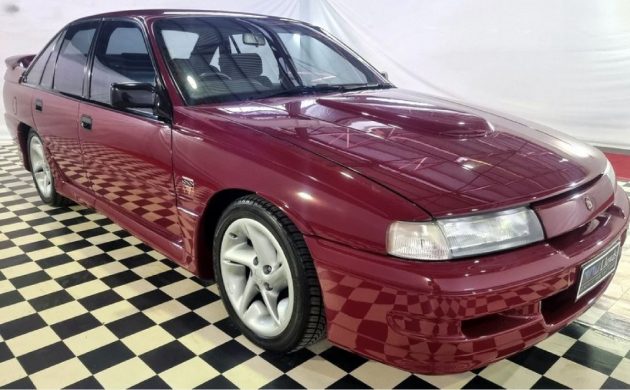

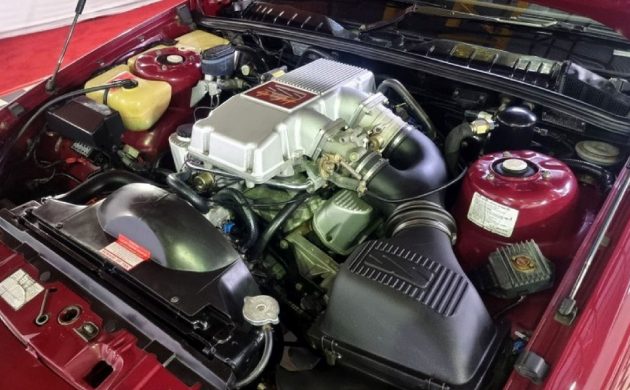
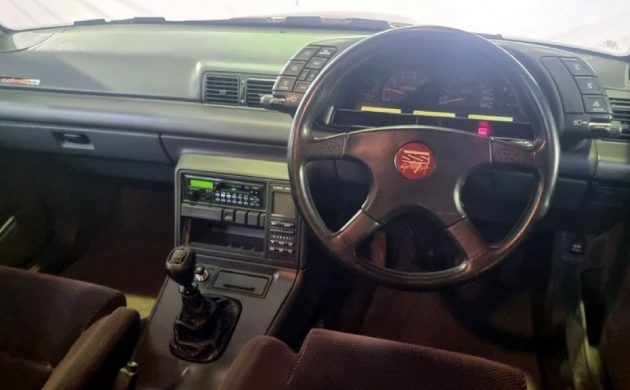
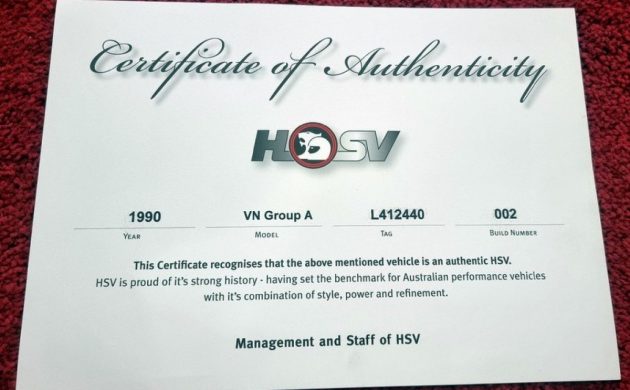


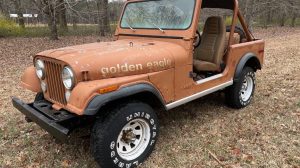
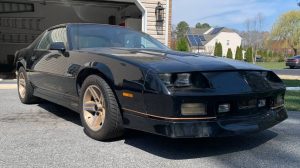
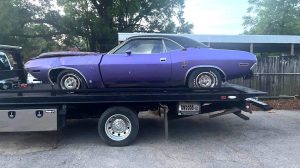


I believe my ex-girlfriend belonged to that group, lol.
Neat looking Lumina!
Excellent write up Adam, must have taken you a week.
Hi all they made 298 red ones. 2 black ones and 1 white one
Interesting car. Not sure what it’s at now but 330k Australian is about 221k US. Looks like a typical GM interior for the time, and am I the only one who sees a bit of Chevy Lumina in the front 3/4 view?
From the outside, the styling is a bit 1st-generation Chevy Lumina-ish. Little hints of 1991 Lumina LTZ here and there. At least to my eye. Nice write up, you broadened my Aussie car knowledge up from “it’s the last of the V-8 Interceptors!” 🤣
The Gp A era was a dark time. Full of cars that weren’t even available here in Australia. And the lie that the cars were ‘more representative of production cars’! When the previous Gp C cars had a full interior, down to rear seats. No great loss when Gp A died in 1993.
Ah, come on man… who did not have a slight puerile chuckle with that headline “Commodore VN Group A SS”
Now, if it were a Ford XB GT Falcon … then drool
Yeah, but it’s only a Ford…
Awesome looking car! I’d buy a Holden if I lived in Straya. Sadly, neither Holden nor Ford Australia are producing cars. I’m more interested in earlier Holden Commodores, such as the VB through VH models. But this is nice.
https://upload.wikimedia.org/wikipedia/commons/5/5b/Chevrolet-Lumina-Euro-3.4-sedan.jpg
I swear those doors are straight off a 1991 Lumina sedan.
Change my mind! 😆
No those doors aren’t off a Lumina, they are off another GM product from the other side of the Atlantic, the ’86-’93 Opel Omega ‘A’, (and Senator ‘A’) This continued the practice of the previous models of Commodore in using the expensive to design and large number of pressings required to make doors,(front and rear, left and right, and matching F,R, L & R internal panels as well as glass, seals, locks, handles etc.)
https://upload.wikimedia.org/wikipedia/commons/9/97/Opel_Omega_rear_20071017.jpg
nice
I love all sorts of racing, and have been up late at night watching Aussie V8 racing. Out of curiosity, I went to the Lloyd’s site and not only was online bidding closed, but the current amount bid was not shown. Huh. I’m saddened by Holden’s demise, and I believe GM also “shopped” their Euro brands. Those even hit closer to home, as I was stationed in Germany and got to see those 4 door sedans with basically small block Corvette engines. (Mid-late 60s’). So it goes…
Aero lift.
I had a Brock Commdore. One night I headed north from Brisbane, to Kilcoy. Sitting on the speed limit, (100kmh) and I got passed by another commodore like I was standing still.
The speedo in my car went to 240kmh, I went past that and never caught the other commodore.
The return trip, I was sitting on 120kmh, and struggled to stay on the road.
Brocky new a lot about high speed stability.